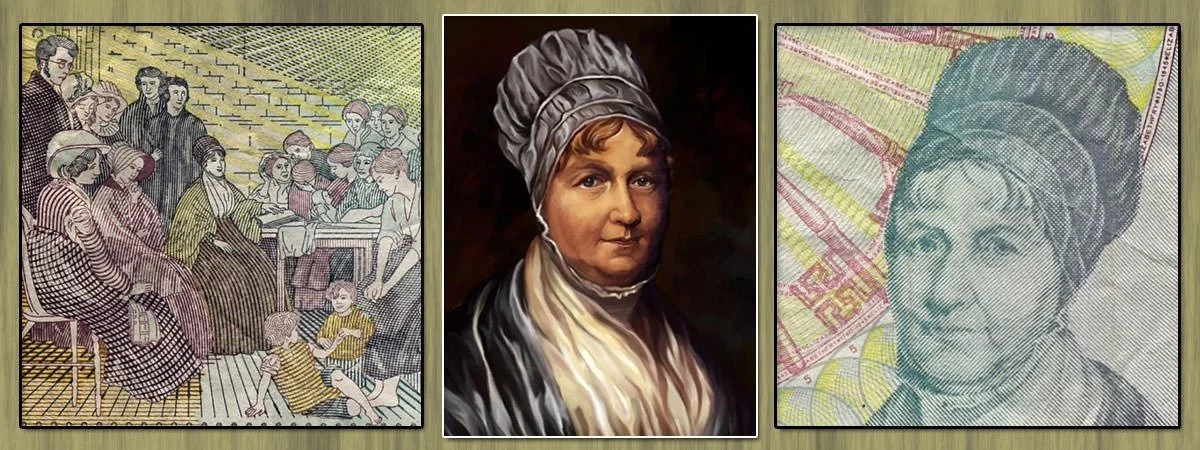Born in the influential Gurney family, Elizabeth Fry became a prominent social reformer and philanthropist. She is famous for her work as a prison reformer especially at the Newgate Prison in London. She founded the first nationwide women’s organization in Britain and was the first woman to testify before a Parliamentary Commission. For her achievements Fry features on the £5 notes issued by the Bank of England since 2001. Know about the life and work of the ‘Angel of Prisons’ through these 10 interesting facts.
#1 ELIZABETH WAS BORN INTO THE HIGHLY INFLUENTIAL GURNEY FAMILY
Elizabeth Gurney was born on 21 May 1780 in Norwich, Norfolk, England. The Quakers is a Christian sect which professes the priesthood of all believers. The Gurney family was a highly influential and extremely rich Quaker family that established the Gurney’s bank in 1770 and had a major influence on the development of Norwich. Elizabeth’s father John Gurney was a partner in Gurney’s Bank. Her mother Catherine was a member of the Barclay family who were among the founders of Barclays Bank.
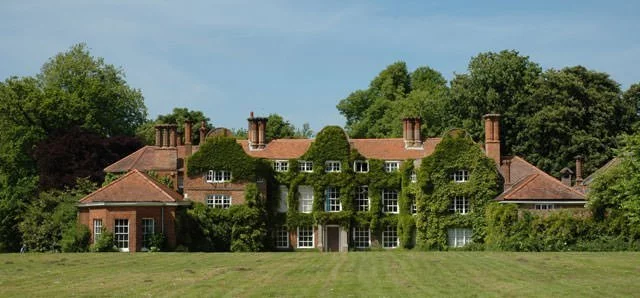
#2 HER SIBLINGS WERE FAMOUS IN THEIR OWN RIGHT
Elizabeth’s father John Gurney had 13 children with his wife Catherine but several of them died young. Those who survived include Samuel Gurney and Daniel Gurney, who became prominent bankers and philanthropists; banker turned social reformer Joseph John Gurney; and Louisa Hoare, writer on education. Catherine died when Elizabeth was twelve which meant that Elizabeth was partly responsible for the care and training of her younger siblings.
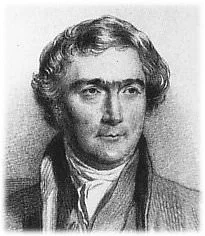
#3 SHE WAS DEEPLY INFLUENCED BY THE PREACHING OF WILLIAM SAVERY
In 1798, at the age of 18, Elizabeth Gurney heard the preaching of William Savery, an American Quaker. Savery spoke on the importance of tackling poverty and injustice. Elizabeth was deeply moved by his preaching. She began visiting the sick in the neighbourhood and collecting old clothes for the poor. She also set up a Sunday school in which she taught children how to read.
#4 ELIZABETH MARRIED JOSEPH FRY IN 1800
In 1799, Elizabeth met Joseph Fry, a Quaker and a tea dealer based in London. On 19 August 1800, Elizabeth married Joseph Fry at the Norwich Goat Lane Friends Meeting House. The couple moved to London first living with Joseph’s parents and then at St. Mildred’s Court, Poultry, City of London. They had eleven children, five sons and six daughters. In 1811, Elizabeth Fry was recorded as Quaker Minister and began to travel and preach.

#5 SHE FIRST VISITED THE NEWGATE PRISON IN 1813
Newgate Prison was a prison at the corner of the Newgate Street in London. In 1813, Elizabeth Fry visited the prison and was horrified by the appalling conditions there. She was most concerned at the conditions in which female prisoners and their children were held. The following day Elizabeth returned with food and clothes for the prisoners. Illness, deaths in the family and financial difficulties prevented Fry from working towards improving the conditions of prisoners for the next few years.
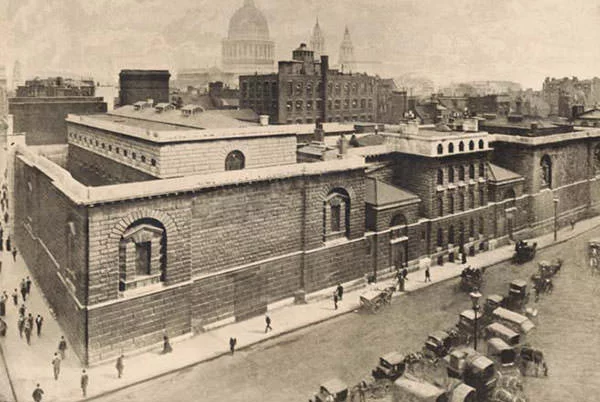
#6 FRY FOUNDED BRITAIN’S FIRST NATIONWIDE WOMEN’S ORGANIZATION
Fry returned to Newgate Prison in 1816 and started working to improve the conditions of prisoners. In 1817 she founded the Association for the Reformation of the Female Prisoners in Newgate. This later led to the formation of British Ladies’ Society for Promoting the Reformation of Female Prisoners, which is said to be the first “nationwide” women’s organisation in Britain.
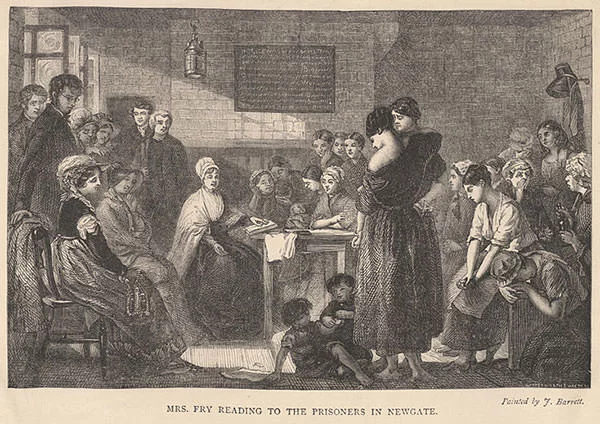
#7 SHE IS MOST FAMOUS FOR HER REFORMS AT THE NEWGATE PRISON
Elizabeth Fry set up a school for the children who were imprisoned with their mothers at Newgate Prison. With help from her association, she set up a system of supervision at the prison, provided materials for women prisoners to sew clothes and encouraged prisoners to improve their sanitary and other living conditions themselves. She became popular in the prison and newspapers began covering and hailing the work she was doing. Queen Charlotte, wife of King George III, invited her at the Mansion House in April 1818, leading to more coverage of the work of Elizabeth Fry.
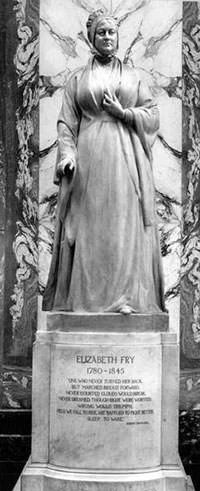
#8 SHE WAS THE FIRST WOMAN TO TESTIFY BEFORE A PARLIAMENTARY COMMISSION
On 27 February 1818, Elizabeth Fry became the first woman to testify before a Parliamentary Commission. She gave evidence to a House of Common Committee on conditions prevalent in British prisons and among other things recommended that women, not men, should look after female prisoners. In the 1920s Fry expanded her work, began visiting prisons all over Britain to help improve their conditions. She became known as the “angel of prisons”.
#9 FRY SET UP AN INSTITUTION FOR ASSISTING THE POOR
Apart from prison reform, Elizabeth Fry was involved in other human welfare work too. She established a night shelter in London, after seeing the body of a young boy in the winter of 1819. In 1824, she set up the Brighton District Visiting Society which arranged for volunteers to assist the poor by providing help and comfort to them. Her scheme became popular and was copied in other parts of Britain. In 1840, Fry opened a training school for nurses. Later Florence Nightingale took several of the nurses trained there to assist wounded soldiers in the Crimean War. Fry also focused on improving hospital systems and treatment of the sick.
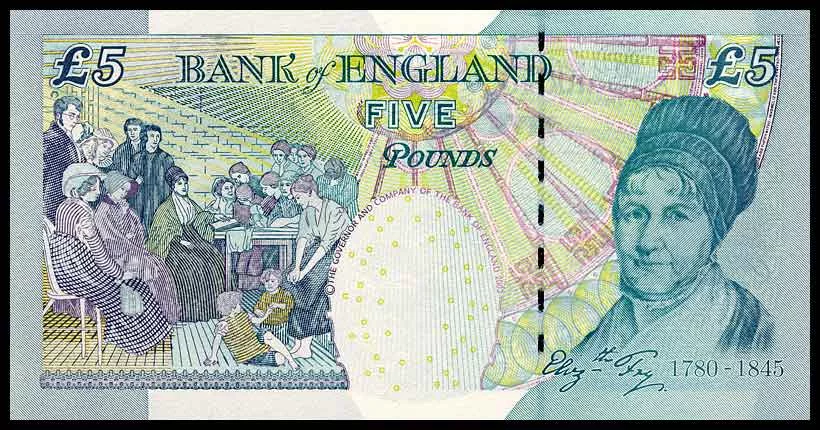
#10 SHE FEATURES ON THE £5 NOTES ISSUED BY THE BANK OF ENGLAND SINCE 2001
Elizabeth Fry died from a stroke in Ramsgate, England, on 12 October 1845. She was 65 years old. Her work was admired during her time by the public as well as several influential people. Queen Victoria was one of her admirers. She granted Fry audience several times and donated money for her cause. Elizabeth Fry remains a popular figure due to her pioneering work in prison reform and several memorials honour her. The Elizabeth Fry Society groups, which work on issues affecting women and girls in the justice system, are named after her. Since 2001, Elizabeth Fry features on the reverse of £5 notes issued by the Bank of England, though her image will be replaced by that of Winston Churchill in 2016.

